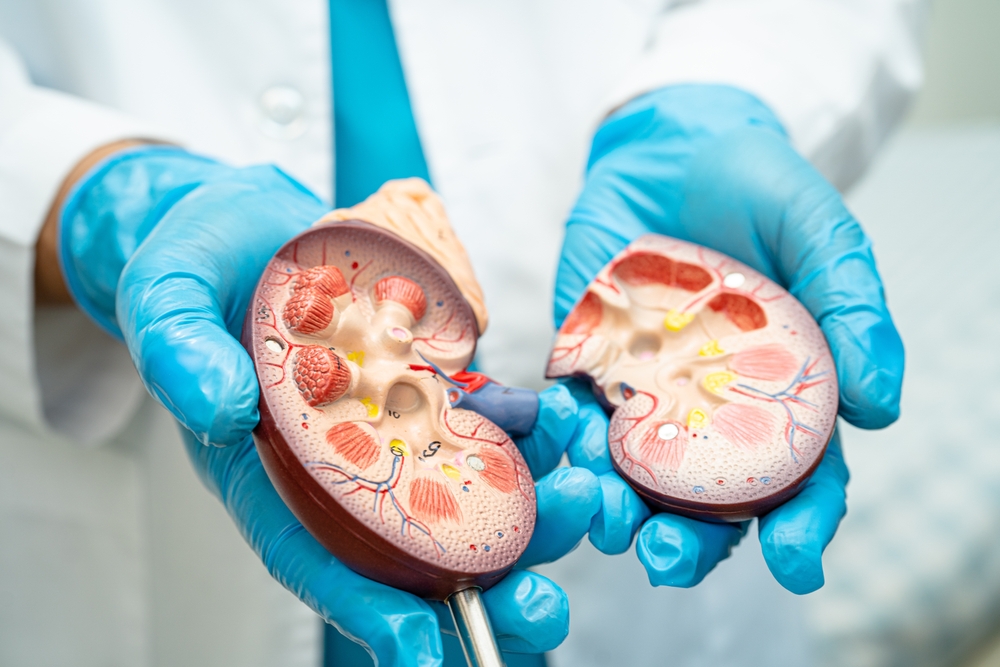
This procedure uses minimally invasive techniques to alleviate pain and complications caused by kidney stones.
Intrarenal stone crushing involves breaking and removing kidney stones smaller than 2 cm. This procedure is typically performed using endoscopic methods or shock wave therapy (ESWL). Endoscopic methods involve inserting an endoscope into the kidney, where the stones are broken using laser or ultrasonic energy. In shock wave therapy, external shock waves are applied to break the stones into smaller pieces.
The primary aim of this procedure is to relieve pain and urinary blockages caused by kidney stones. Intrarenal stone crushing effectively and safely removes stones and restores normal urine flow. Because this method is minimally invasive, the recovery time is short, allowing patients to return to their normal activities quickly.
Endoscopic stone crushing involves breaking and removing kidney stones using endoscopic tools. Methods include flexible ureteroscopy and percutaneous nephrolithotomy (PNL). Flexible ureteroscopy involves inserting a thin endoscope through the urethra to the kidney. The stones are broken using laser or ultrasonic energy and removed in small pieces.
Percutaneous nephrolithotomy involves making a small incision in the kidney and inserting an endoscope to break the stones. This method is preferred for larger or more complex stones. Percutaneous nephrolithotomy is usually performed under general anesthesia, and the recovery period may be longer. However, this method effectively removes large stones and has a high success rate.
The advantages of intrarenal stone crushing include:
Minimally invasive, requiring no large incisions.
Generally short recovery time.
Effective for treating various types of stones.
Higher success rate compared to shock wave therapy.
Shock wave therapy (ESWL) is a non-invasive procedure to break kidney stones using external shock waves. During ESWL, the patient lies on a special table, and shock waves are directed at the area where the kidney stones are located. These waves break the stones into smaller pieces that can be passed through the urine.
The advantages of ESWL include being non-invasive and having a quick recovery time. This procedure is usually performed on an outpatient basis, allowing patients to return to their normal activities the same day. However, ESWL has limitations. It may not be effective for larger or harder stones, and if the stone fragments are not completely passed, additional treatment may be necessary.
Post-operative care and recovery for intrarenal stone crushing require careful monitoring. Patients may experience mild pain, blood in the urine, and a burning sensation for the first few days after the procedure. These symptoms typically subside within a few weeks. Patients should use prescribed pain relievers and drink plenty of water to help flush out stone fragments through the urine.
During recovery, it is essential to avoid strenuous physical activities. Patients should rest and gradually resume normal activities over the first few weeks. Following the recommended diet and fluid intake is also crucial. Regular follow-up appointments with the doctor are important to monitor the recovery process and detect any potential complications early. For more information on intrarenal stone crushing, contact EMPCLINICS.
Intrarenal stone crushing is used to treat small kidney stones that cannot pass on their own or cause pain.
Pre-operative tests usually include blood tests, urine analysis, and imaging tests such as ultrasound or CT scan to evaluate the condition of the kidneys.
The procedure typically takes 30 minutes to 1 hour, depending on the size and location of the stone.